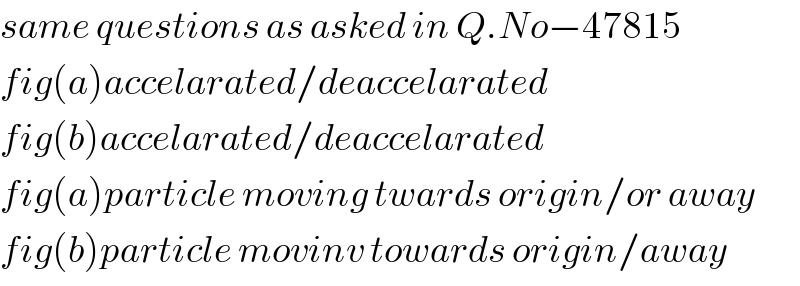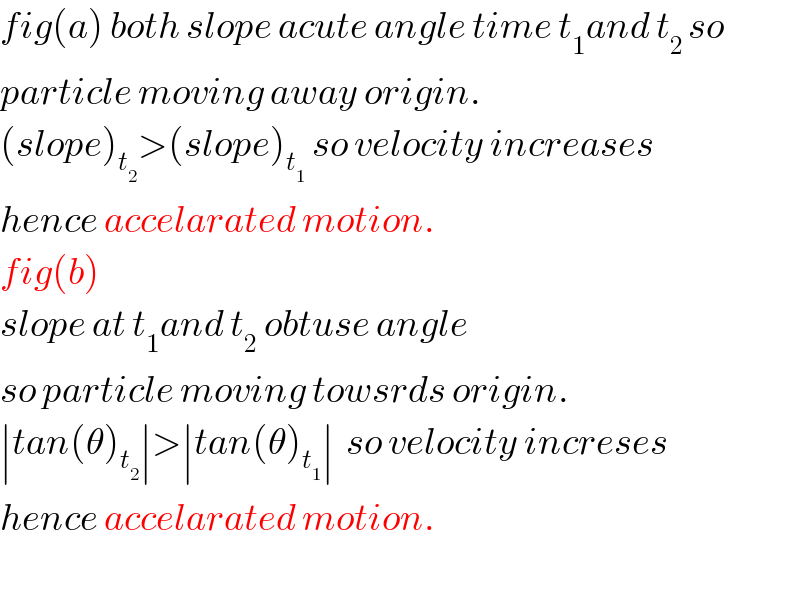
Question Number 47817 by tanmay.chaudhury50@gmail.com last updated on 15/Nov/18

Commented by tanmay.chaudhury50@gmail.com last updated on 15/Nov/18

$${same}\:{questions}\:{as}\:{asked}\:{in}\:{Q}.{No}−\mathrm{47815} \\ $$$${fig}\left({a}\right){accelarated}/{deaccelarated} \\ $$$${fig}\left({b}\right){accelarated}/{deaccelarated} \\ $$$${fig}\left({a}\right){particle}\:{moving}\:{twards}\:{origin}/{or}\:{away} \\ $$$${fig}\left({b}\right){particle}\:{movinv}\:{towards}\:{origin}/{away} \\ $$
Answered by tanmay.chaudhury50@gmail.com last updated on 15/Nov/18

$${fig}\left({a}\right)\:{both}\:{slope}\:{acute}\:{angle}\:{time}\:{t}_{\mathrm{1}} {and}\:{t}_{\mathrm{2}\:} {so}\: \\ $$$${particle}\:{moving}\:{away}\:{origin}. \\ $$$$\left({slope}\right)_{{t}_{\mathrm{2}} } >\left({slope}\right)_{{t}_{\mathrm{1}} } \:{so}\:{velocity}\:{increases} \\ $$$${hence}\:{accelarated}\:{motion}. \\ $$$${fig}\left({b}\right) \\ $$$${slope}\:{at}\:{t}_{\mathrm{1}} {and}\:{t}_{\mathrm{2}} \:{obtuse}\:{angle} \\ $$$${so}\:{particle}\:{moving}\:{towsrds}\:{origin}. \\ $$$$\mid{tan}\left(\theta\right)_{{t}_{\mathrm{2}} } \mid>\mid{tan}\left(\theta\right)_{{t}_{\mathrm{1}} } \mid\:\:{so}\:{velocity}\:{increses} \\ $$$${hence}\:{accelarated}\:{motion}. \\ $$$$ \\ $$
